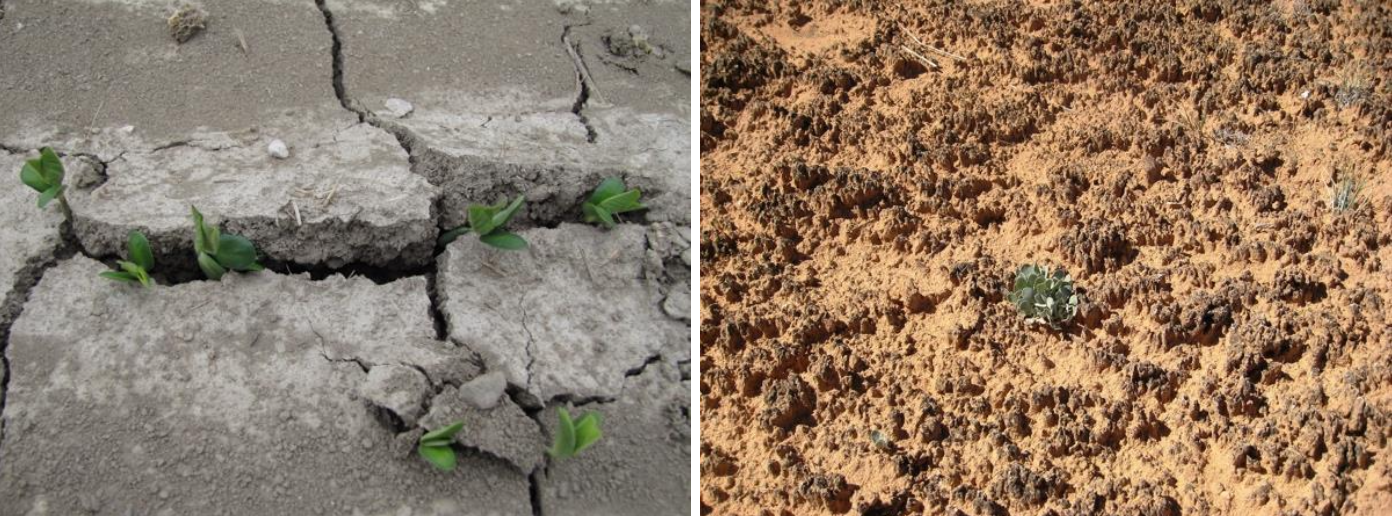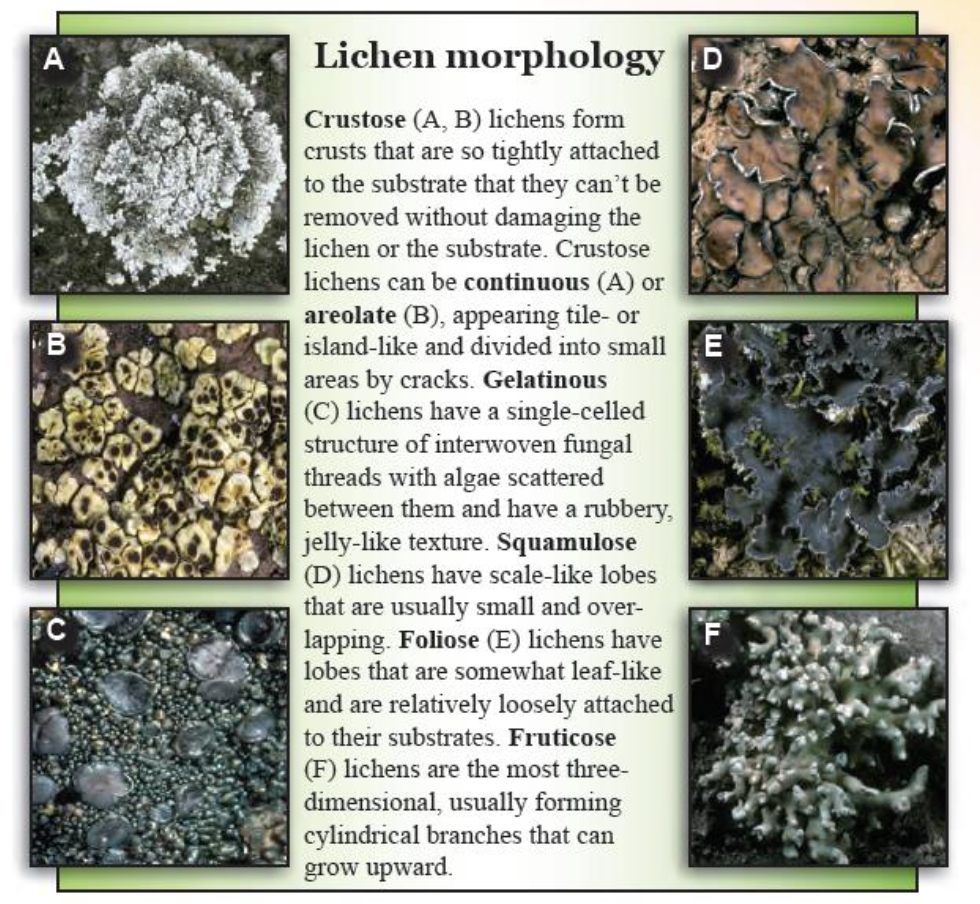Presentation by Johnny Campbell
I know, I know... the last thing you need is another acronym to remember, but this one is worth the effort. BSC stands for biological soil crust and although you may not have known it at the time, you have probably seen one. And if you are an avid hiker living in the western United States, you may have even destroyed one or two.
Most of us are familiar with soil crust – on the side of your yard where the grass just does not grow or along your favorite hiking trail – but did you know not all soil crusts are created equal? Your standard soil crust is due to lack of moisture and results in a cracked appearance and loss of soil aggregates. This crust leads to erosion and reduces soil quality. BSCs are a whole other animal (and they are made up of animals!) BSCs refer to organisms that live in the top few millimeters of the soil surface and are critical to desert ecology. The two images below show the difference in soil crusting and compare a dry soil on the left to a BSC on the right. UC Davis Horticulture and Agronomy graduate student Johnny Campbell recently discussed BSCs with a group of graduate students studying the eco-geomorphology of the Grand Canyon.

He explained that a BSC is an association of organisms and soil in the top few millimeters of the surface. BSCs can include cyanobacteria, green algae, microfungi, lichens, byrophytes, and liverworts. Their appearance can vary greatly based on their environment. BSCs can be continuous masses, separated into tile-like sections, have a rubbery, jelly-like texture, have overlapping lobes, lose leaves, or three dimensional cylindrical branches (Rosentreter, et al. 2007). Some common examples of lichen BSCs are featured below.

These communities can survive harsh conditions but cannot compete with plants for sunlight. BSC is a broad term and individual communities can vary greatly from one another – some can survive in hot, cool, cold arid, or semi-arid climates and can account for up to 70% of living cover in some plant communities. BSCs are widespread throughout the American West and are adapted to dry and desert-like conditions (Rosentreter, et al., 2007). They can respond quickly to abrupt and brief rain events, which allows them to optimize their water use when they have access to some, however small that amount may be.
In addition to learning where to find a BSC and how to identify one, the class discovered that an ecosystem is lucky to have BSCs! They benefit their environment in many ways and plants love when a BSC is nearby. BSCs can play an important role in elemental life cycles and create plant food. They help plants access nutrients in the soil and discourage weeds from growing. They also help water and air to move into the soil, which improves soil health (and the health of plants and animals living in that soil). And last, but not least, BSCs stabilize soil and reduce erosion (Belnap, et al., 2001).
But what’s so bad about erosion? Erosion is the destruction and loss of soil (usually due to wind or water) and is unfavorable from ecological, economic, and engineering perspectives. Campbell described erosion as the loss of habitat for plant and animal communities and a source of pollution into the environment. For farmers, erosion could translate to loss of their property and livelihood, while it could spell disaster for large scale infrastructure projects. Undisturbed BSCs prevent erosion by creating pathways for rain water to move down into the soil instead of running off, but rain that falls on flat or disturbed BSCs will likely runoff the surface and take some of the soil with it. Keeping water in the soil is important for the success of plants and animals and is an important indicator of the health of the environment.
BSCs play a unique ecological roll in their environments, but have the unfortunately common trait of being threatened by human activity. They are very sensitive to disturbances, especially those caused by humans, and scientists are not sure how long it takes communities to reestablish themselves after being destroyed, but it could range from a couple years to thousands (Belnap, et al., 2001). BSCs are frequently destroyed by foot or vehicle traffic, bikes, livestock grazing, military training, and development.
If you’re feeling guilty for all your walking or biking and the many BSCs you may have destroyed, shake it off. There are several things you can do to help protect BSCs and their microscopic members for the future.
- Learn more! There is plenty more to know about BSC research and management strategies and how to identify these unique soil crusts.
- Educate others about BSCs! Teaching your friends and family about the importance of BSCs for their environments is the best easiest way to increase their preservation.
- Stay of the crust, don’t walk on BSCs, and think twice about where you are going on your next desert hike – I know I will!
References
Belnap, J., Rosentreter, R., Leonard, S., Kaltenecker, J., Williams, J., & Eldridge, D. (2001). Biological soil crusts: ecology and management. US Dept. of Interior TR, 1730–2.
Rosentreter, R., Bowker, M., & Belnap, J. (2007). A Field Guide to Biological Soil Crusts of Western U.S. Drylands - Common Lichens and Bryophytes. U.S. Government Printing Office, Denver, Colorado, 104.
